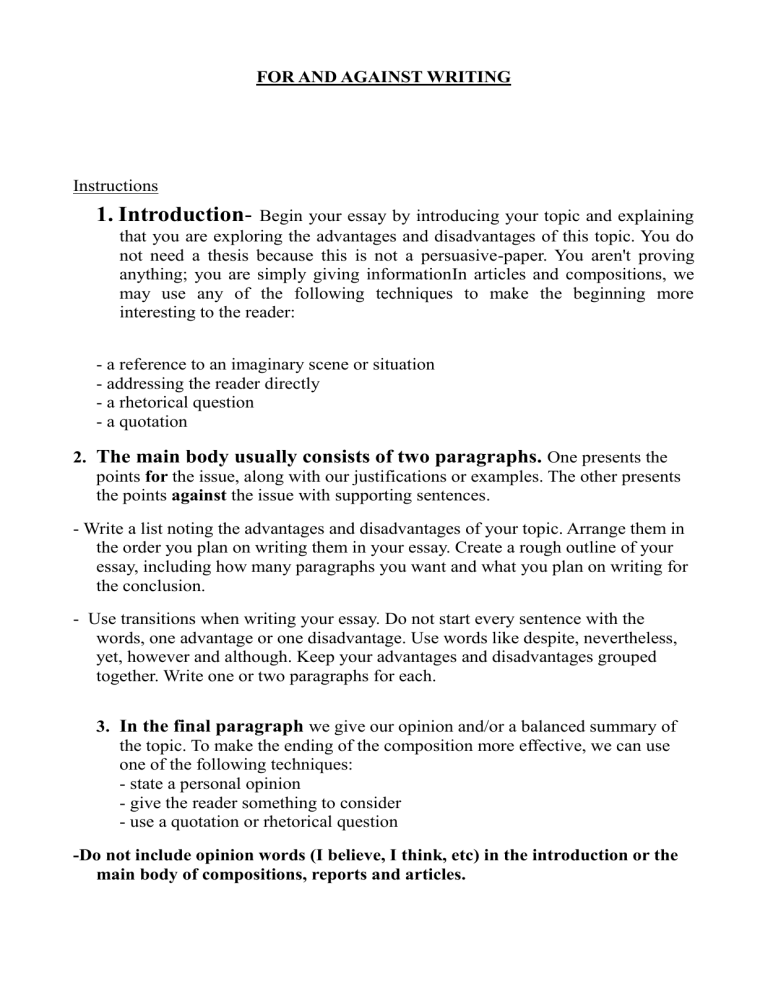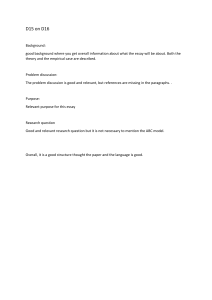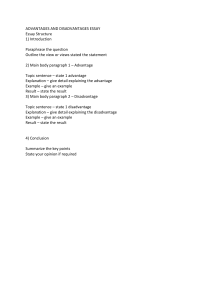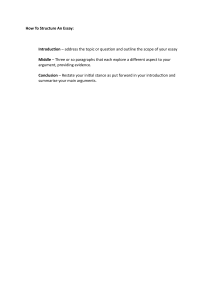
FOR AND AGAINST WRITING Instructions 1. Introduction- Begin your essay by introducing your topic and explaining that you are exploring the advantages and disadvantages of this topic. You do not need a thesis because this is not a persuasive-paper. You aren't proving anything; you are simply giving informationIn articles and compositions, we may use any of the following techniques to make the beginning more interesting to the reader: - a reference to an imaginary scene or situation - addressing the reader directly - a rhetorical question - a quotation 2. The main body usually consists of two paragraphs. One presents the points for the issue, along with our justifications or examples. The other presents the points against the issue with supporting sentences. - Write a list noting the advantages and disadvantages of your topic. Arrange them in the order you plan on writing them in your essay. Create a rough outline of your essay, including how many paragraphs you want and what you plan on writing for the conclusion. - Use transitions when writing your essay. Do not start every sentence with the words, one advantage or one disadvantage. Use words like despite, nevertheless, yet, however and although. Keep your advantages and disadvantages grouped together. Write one or two paragraphs for each. 3. In the final paragraph we give our opinion and/or a balanced summary of the topic. To make the ending of the composition more effective, we can use one of the following techniques: - state a personal opinion - give the reader something to consider - use a quotation or rhetorical question -Do not include opinion words (I believe, I think, etc) in the introduction or the main body of compositions, reports and articles. In a discursive composition, ideas should be linked with appropriate linking words and phrases. Examples of these include: To list and add points: Firstly/In the first place/To start/begin with ...; Secondly/In addition/Furthermore/Moreover/Besides...; Thirdly/Finally/Last; Last but not least; etc To introduce or list advantages: The first/main/most important advantage of...; One/Another/An additional advantage of ...; One point of view in favour of...; It is often suggested/believed/argued that...; Some/Many people suggest/feel/argue that...; etc To introduce or list disadvantages: The main/most important disadvantage/drawback of...; One/Another/An additional disadvantage/negative effect of...; One point/argument against; etc To introduce examples/reasons/results: For example/instance; such as; like; in particular; therefore; for this reason; because; as; since; as a result; etc To show contrast: On the other hand; However; still; but; Nonetheless; Nevertheless; Although; Even though; Despite/ In spite of (the fact that); etc To introduce a conclusion: In conclusion; To conclude/sum up; All in all; Finally; Last; All things considered; Taking everything into account/



